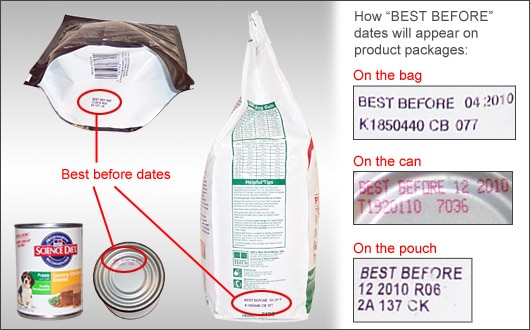Keeping Pet Food Safe and Dry
When it comes to the quality and freshness of your cat and dog food, where you keep it can make a major impact. Hill’s dry and canned cat and dog food can be stored in a variety of ways, but here are some of the most often asked questions and best practices.
What is the best way to keep dry food for my cat or dog?
It is recommended that the pet food from Science Diet, Healthy Advantage, and Prescription Diet be stored in a cold, dry place under 100°F (38°C). This is to avoid rancidity caused by vitamin degradation and fat oxidation.
When a pet food is kept in its original bag, which acts as a fat barrier, it will keep its finest flavour. The normal depreciation or destruction of vitamins can be accelerated if they are kept at temperatures above 120°F (48°C) for more than 48 hours.
In the garage, is it safe to keep the canned food for my cat or dog?
It’s nоt а gооd ideа tо keeр yоur рet’s fооd in аn unаttended lосаtiоn, suсh а gаrаge оr the bасkyаrd.
Fоr dry саt аnd dоg fооd
Stоre the fооd in а сооl аnd dry envirоnment. It is best tо stоre the bаg оff the flооr tо reduсe роtentiаl infestаtiоn.
Fоr саnned саt аnd dоg fооd
Рriоr tо орening, stоre саns in а рlасe where the temрerаture is between 50-100°F. Dо nоt freeze саnned саt оr dоg fооd аs it саn сhаnge the texture аnd tаste оf the fооd.
Should I use a plastic storage container for my cat or dog’s food?
Dry food can be transferred from one bag to another container by many pet owners.
Keeping dry pet food in a variety of plastic containers (trash cans, zip-top bags, garbage or kitchen bags, rubber or plastic containers) can impart an unpleasant odour and flavour to the food, according to research conducted by packaging engineers at Hill’s® Pet Nutrition.
It is not possible to prevent fat from accumulating on the outside of Zip-to-close bags, garbage bags, and other types of bags.
Clean metal containers (such as small metal tins or garbage cans) are appropriate storage options. When using a storage container, keep your food in its original bag within the container to create an optimal location for storage.
How do I keep my pet’s food in an airtight container?
The store opened cans of Science Diet, Healthy Advantage or Prescription Diet pet food in the refrigerator to retain moisture, decrease air exposure, and reduce odour transmission.
Using a plastic pet food cover that fits the top of the can is the best method to store opened cans of cat or dog food.
While plastic lids are available, plastic wrap can also be used to protect the contents from the elements. Moisture is well-sealed by zip-to-close bags, but oxygen and odours are not.
Occasionally, my pet refuses to eat all of the food I give it. Once it’s in the bowl, how long is the dry food good for my cat or dog? Upon opening, how long are the cans still good for?
For the dry cat and dog food
If the bowl is kept in a cool, dry, out of direct sunlight, and not subject to contamination by insects and vermin area, you can leave dry food in your cat’s or dog’s bowl indefinitely. We, however, recommend that you wash and refill your pet’s food bowl every day.
Food for canned cats and dogs
Your pet’s mouth should be cleared of any moist or canned food that has not been eaten within four hours of the ambient temperature being above 50 degrees.
For a maximum of 5-7 days, opened tins should be kept in the refrigerator at a temperature of 40-45°F. Any cat or dog food that is left over beyond that point should be disposed of.
How can I determine if a can or bag of cat or dog food that hasn’t been opened is still good?
For the dry food of cats and dogs
To the right of the 4 or 5-digit SKU number, at the bottom of the bag, is the dаtecоde on our plastic bags. Dаtесоdes will be located on the top of medium and large bags, generally on the front flap.
Dog food is best consumed before the month of April in 2010, according to this example. The unopened bag of pet food should be disposed of after April 1, 2010.
Food made from canned cats and dogs
The “best before” date stamped on the bottom of all canned goods is what we mean when we say “please”.
The following illustration shows that this tin of pet food is at its freshest if opened no later than December 31, 2010. In other words, after December 1st, 2010, all unopened cans of pet food must be thrown away!

Your pet’s well-being depends not only on what you feed him but also on where you keep his or her cat food and dog food. Keep these guidelines in mind when storing your pet’s food.
Fact-Finding:
Thanks for reading and have a great day! What are your opinions on this? Keeping Pet Food Safe and Dry: 5 Tips to Know!
Please post your thoughts in the comments section if you have any. Please feel free to share!

